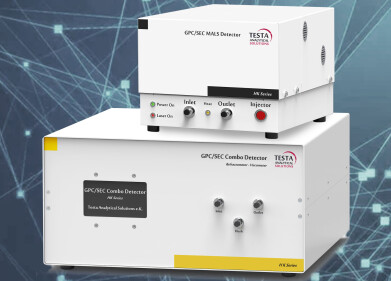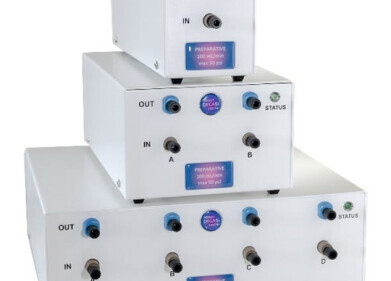Chromatography
UHPLC Hardware Meets DryLab Software
Feb 04 2011
Shimadzu cooperates with the Berlin/Germany based Molnár- Institute in applying the new DryLab 2010 software and the new generation of Shimadzu UHPLC instruments. QbD automated HPLC Method Development using DryLab 2010 enables the transfer of HPLC methods into most-modern Shimadzu UHPLC technology. By remaining in the design space, much higher flexibility is achieved in adjusting working conditions according to individual needs. DryLab 2010 and Shimadzu’s LabSolutions software complement each other perfectly. LabSolutions provides a platform for all of Shimadzu’s chromatographic systems. Even 3D detection technologies are covered. DryLab 2010 targets method development and applications to run under regulated environment with a special focus on the pharmaceutical industry. The software’s reliability rate is 99.8%. More than 106 experiments can be modelled based on a set of 12 basic experiments under pre-defined conditions.
DryLab 2010 now enables simultaneous optimisation of several measured experimental parameters (tG, T, pH, ternary composition of eluent B, buffer or additive concentration) with 9 other derived factors (column length, -ID, particle size, flowrate, %B(start), %B(end), gradient steps, dwell volume, extra column volume) to further define the Design Space of a separation. The 3D Cube is calculated based on 12 experiments using 3 gradient time-temperature (tG-T) models with one additional factor and it represents over one million modelled chromatograms and evaluates multiple parameters simultaneously.
DryLab is useful in almost all chromatography applications in the lab. The software helps to develop complete methods in minimal time, shorten run times, find the best separation conditions for any component in a mixture and transfer methods to better and more modern instruments such as Shimadzu’s Nexera. FDA, ICH and other regulatory authorities promote and request application of QbD principles to simplify the exchange of complex information on chromatographic selectivity and critical resolution values, so as to support better method control including method transfer. Furthermore, the ICH Q8 has made a clear movement towards more flexibility in supporting development of new products.
Digital Edition
Lab Asia 31.2 April 2024
April 2024
In This Edition Chromatography Articles - Approaches to troubleshooting an SPE method for the analysis of oligonucleotides (pt i) - High-precision liquid flow processes demand full fluidic c...
View all digital editions
Events
Apr 22 2024 Marrakech, Morroco
Making Pharmaceuticals Exhibition & Conference
Apr 23 2024 Coventry, UK
Apr 23 2024 Kintex, South Korea
Apr 23 2024 Seoul, South Korea
Apr 24 2024 Jakarta, Indonesia




.jpg)













